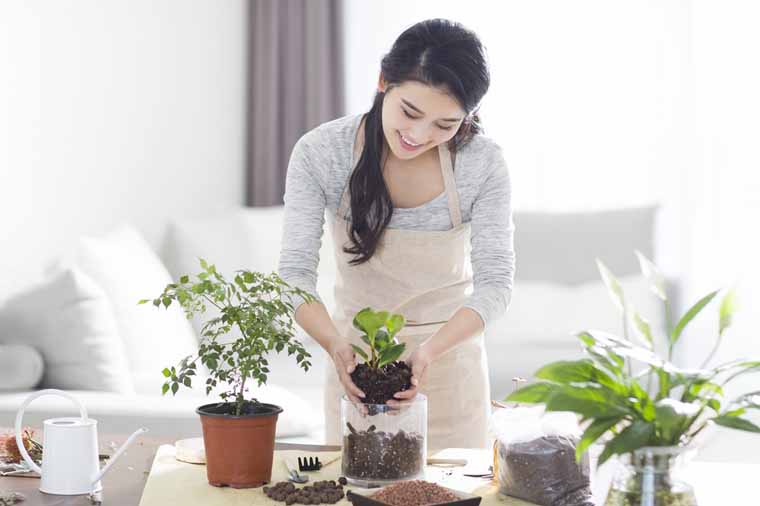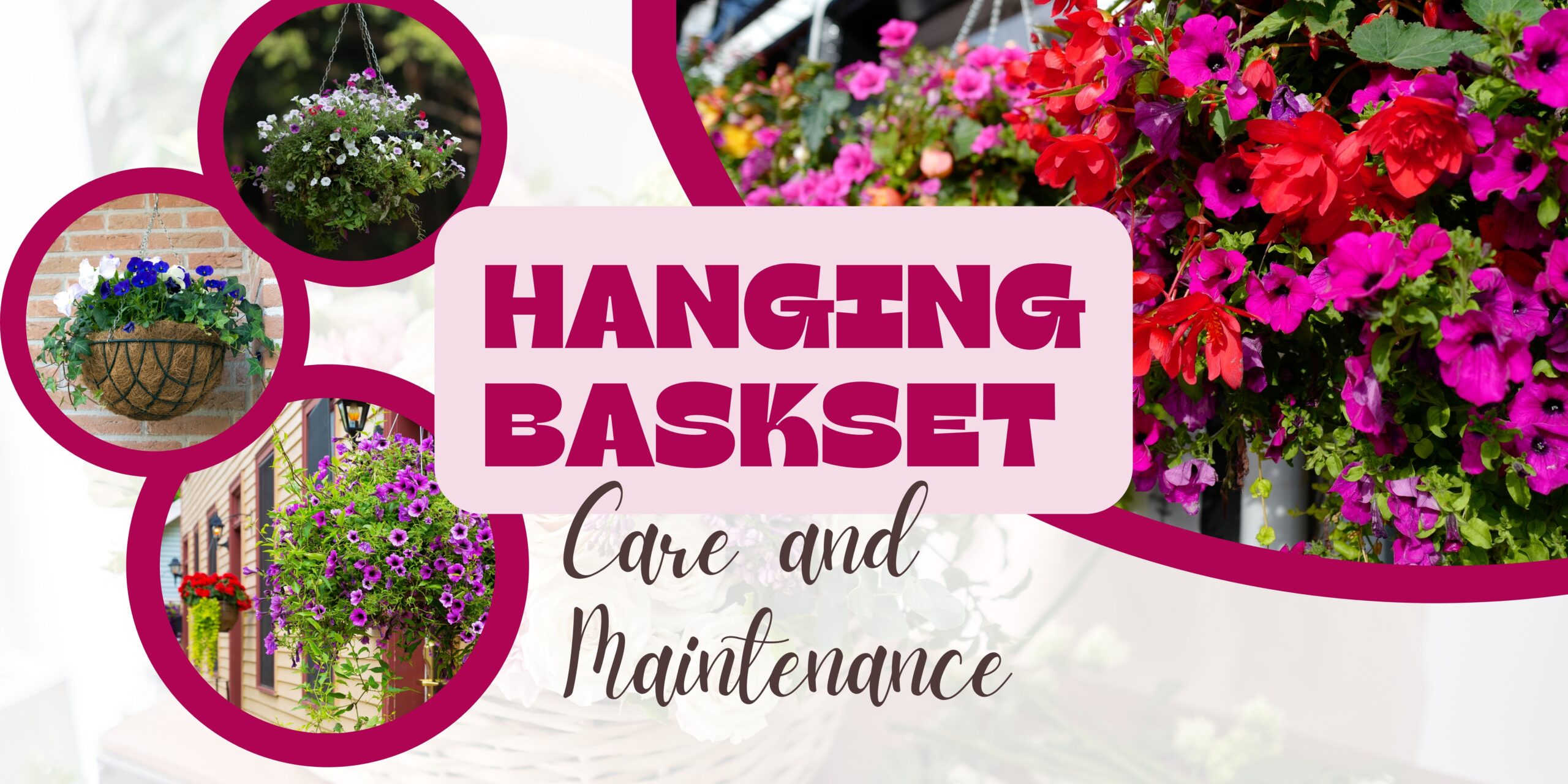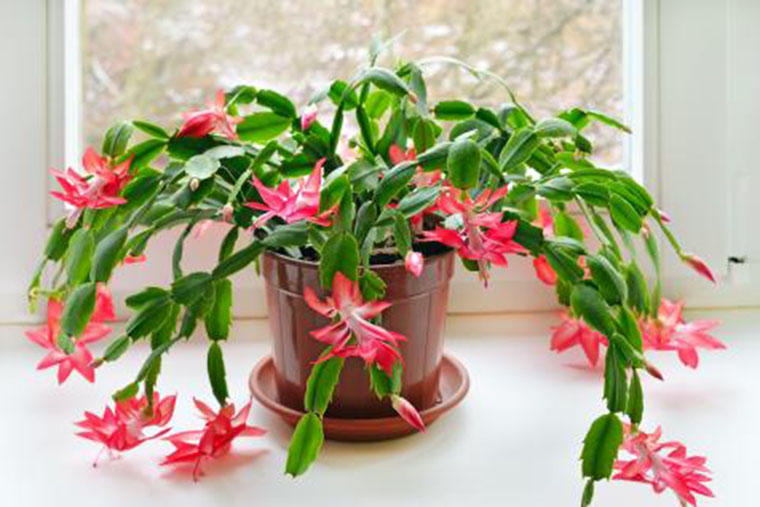Your Spring Care Checklist for Healthier Happier Houseplants
It’s all about the light. As soon as our days get longer, the additional daylight signals a new growing season for our houseplants. So while we still may have temperatures well below zero and snow outside our doors, our tropical indoor plants are ready to grow. The early months of spring are a great time to tend to their needs before shifting our focus to our outdoor gardens. Here is a quick checklist to make sure your houseplants get a healthy and happy start for the growing season.
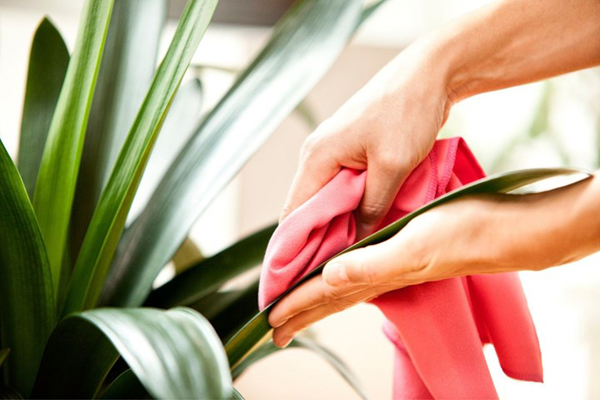
1. Clean Your Plants
As plants wake up and begin to grow their need for daylight increases. The more light they can photosynthesize, the healthier the plant. A layer of dust on plant leaves can hinder their light intake. During the winter months, our plants are more prone to dust build up due to heavy furnace use and lack of fresh circulating air. By cleaning the leaves our plants will look better and stay healthier.
Cleaning : Depending on the plant, some plants do well with a nice gentle shower with tepid water. Others do better by gently wiping their leaves with a damp cloth. There is no need to use a leaf polish or wax, those types of products can clog pores and harm sensitive plants. However, it would be a good time to follow with a preventative oil, such as neem oil, to help deter future bug infestations.
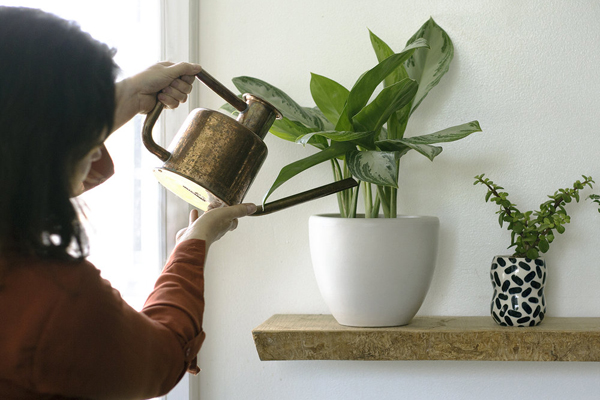
2. Water Your Plants
As your plants begin to wake and grow, they’ll also become thirstier. This is usually the first sign they are awake, when suddenly your pots are drying out faster than they were a couple weeks ago. In fact, it’s not uncommon for plant pots to dry out faster in early spring than they do in the middle of summer. This happens for two reasons, first our plant’s water needs have increased to support new growth. Second, in early spring the weather is still cold, our air is still dry, and our furnaces are still running, resulting in soil which can not retain its moisture well.
Water More Often : Most indoor plants prefer to have evenly moist soil throughout the spring and summer months. Now is a good time to start checking your plants more frequently and watering when they feel dry one inch below the topsoil. With increased waterings, comes the risk of over watering. Be sure to always check your soil and never just automatically water.
Check Your Drainage : Now is also a good time to check you drainage holes and make sure your plant pots are still draining well.
Water Baths : If you find your soil to be extra crispy between waterings, this is a good time to bottom water your plants. Water baths are more efficient at replacing moisture within the soil. By allowing the pot to sit in a shallow tub of water, the soil can slowly reabsorb the amount of water needed to fully rehydrate. Where as top waterings tend to have water quickly drain through the soil, providing some moisture to the plant but not fully rehydrating the soil.
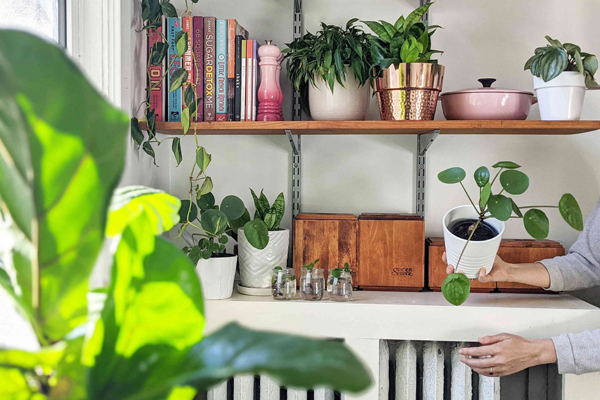
3. Move Your Plants
Here in Alberta, where our sun stays low on the horizon through the winter months, we have a tendency to place our plants closest to the brightest windows. However, as the sun shifts in the sky, not only are we headed towards longer days but the light rays will actually become stronger. Many indoor plants are not tolerant of direct sunlight especially through southern windows during spring and summer, which can get quite hot. Every plant is different and it may take a little experimenting to find the perfect spot, be sure to reference our Light Conditions section in our Guide to Choosing Houseplants for help, if needed.
Too Much Light : As you search for a new spot, keep an eye on the leaves to let you know if you’ve found the right one. If you notice the leaves becoming white or transparent, they are getting too much sun and the plant is trying to compensate by decreasing the production of chlorophyll. If you notice leaves turning brown, the light rays are too intense. Try moving them a little farther back away from the window.
Not Enough Light : Alternatively, if you notice your plant starting to look a little leggy or spindlely then your plant is likely stretching itself in search of more light. Try moving these plants to a brighter room or closer to a window.
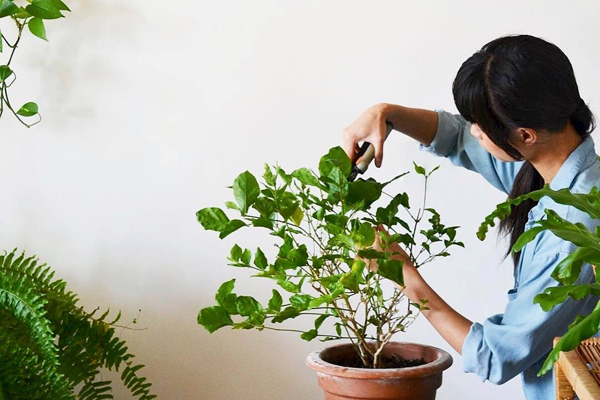
4. Trim Your Plants
For those leggy looking plants, go ahead and give them a trim. Spring is the best time to trim houseplants to remove any unhealthy branches or leaves, and clean them up. Pruning houseplants in spring encourages branching and fresh new growth. Cut off any dead or dying leaves and branches, and prune off brown leaf tips and edges. Never prune more than 30% of your plant, pruning away too much may send your plant into shock.
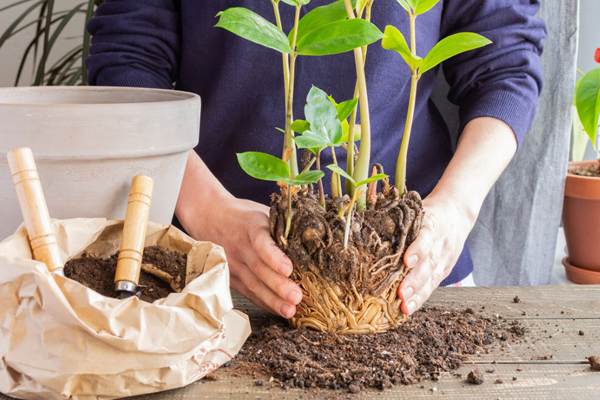
5. Repot Your Plants
Spring is also the best time to repot any houseplants that may need room to expand. Not all houseplants will need to be repotted. Repotting can send some plants into shock, so it is best to be mindful and only repot the plants that have obviously outgrown their container. There are some telltale signs to let you know when to repot :
– If you pot looks like it’s going to burst.
– If the roots are growing out of the bottom of the pot or over the top of the soil.
– If water runs right through the soil without soaking in, a possible sign there are more roots than soil.
– If the roots are growing in a circular pattern inside the pot.
Methods : Repotting can be done a couple different ways. One option is to divide the plant, repotting both halves with fresh soil into two separate pots. This method works well for some of the hardier multistemed varieties, such as pothos, philodendrons, snake plants, and ferns just to name a few. The second option is to pot up the entire root ball into a larger pot with fresh soil. Any plant can be potted up, but this option is especially great for single stemmed plants or plants with more sensitive root systems.
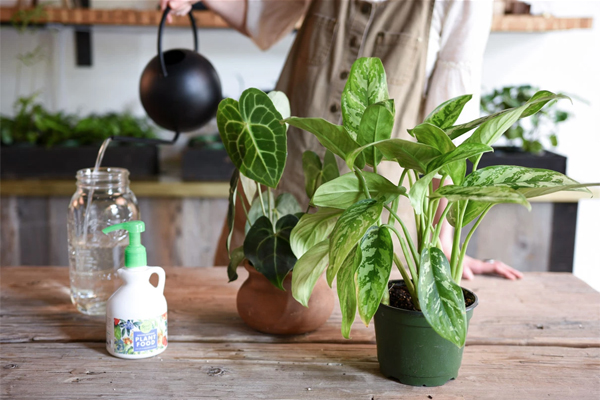
6. Fertilize Your Plants
Lastly, spring is the time to start fertilizing your houseplants again. Once they’ve shown signs that they are actively growing, they’re ready to be fed. Since they are just waking up, it’s a good idea to start off slow. Start with a 1/2 dose before returning to a full strength regiment, otherwise it might be too much and send them into shock. If you have access to organic fertilizers try those, in place of harsh synthetic fertilizers which may burn some of your more sensitive plants.
 |
| 
